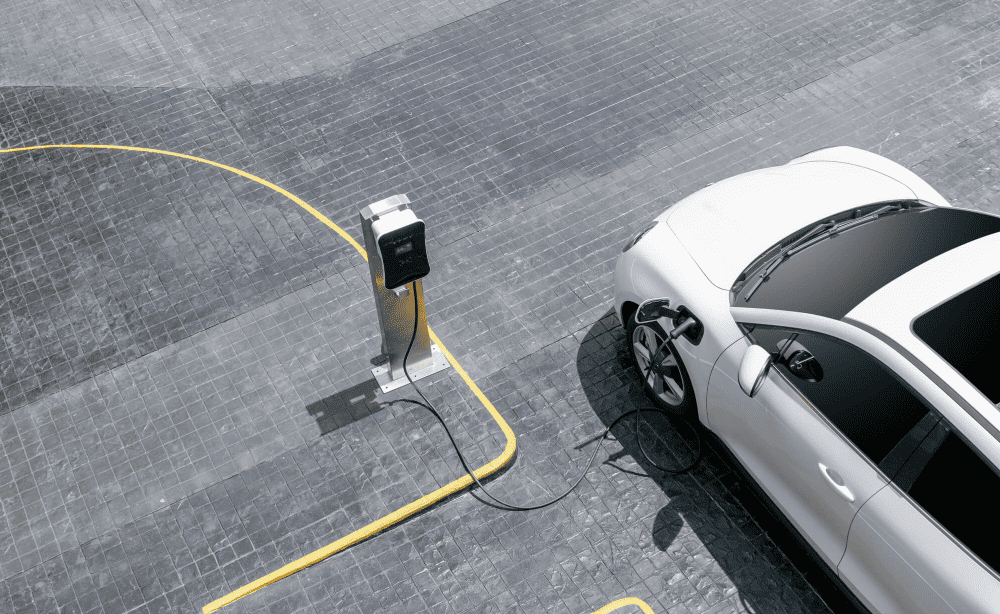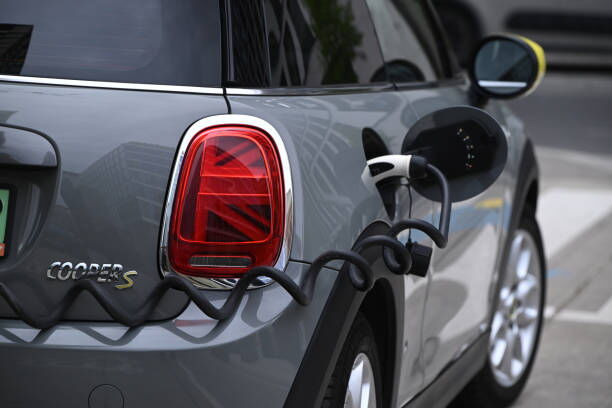As electric vehicles (EVs) become increasingly popular, one of the most common questions among new EV owners is: How do I charge my electric car at home without a dedicated EV charging station? While home EV charging stations are convenient, they are not always feasible due to cost, space, or rental restrictions. Fortunately, there are several practical and efficient ways to charge your electric car at home without installing a dedicated EV charger. This article explores alternative charging methods, including workplace charging, public on-street chargers, rapid charging, destination charging, and portable charging solutions. Whether you’re a homeowner or a renter, these options can help you keep your EV powered up and ready to go.
Many businesses are embracing sustainability by making greener switches, and one way they’re doing this is by installing EV charging stations in company car parks. Workplace charging is an excellent solution for EV owners who don’t have access to home charging infrastructure. By plugging in your car when you arrive at work, you can replenish your battery throughout the day, ensuring you have enough charge for your commute home.

Convenience: No need to plan ahead or make special trips to public charging stations.
Cost Savings: Some employers offer free or subsidized charging as an employee benefit.
Sustainability: Encourages greener commuting habits and supports corporate sustainability goals.
If your workplace doesn’t currently offer EV charging, consider advocating for it. Many governments and organizations provide incentives for businesses to install charging stations, making it a win-win for employers and employees alike.
For those living in urban areas or residential neighborhoods without private driveways, public on-street EV chargers can be a lifesaver. These chargers are often located in designated parking spots or tucked away in convenient locations, making them accessible for overnight or daytime charging.
Locate Chargers: Use apps like PlugShare, ChargePoint, or your local council’s website to find nearby on-street chargers.
Check Availability: Some chargers may require reservations or have time limits, so plan accordingly.
Payment Options: Most on-street chargers accept contactless payments or require a membership card for access.
While on-street charging may not be as convenient as having a charger at home, it’s a reliable option for urban EV owners who lack private parking spaces.

Rapid charging is a popular option for EV owners who need a quick boost of power. These chargers are typically found at service stations, petrol stations, and supermarkets, offering power outputs ranging from 50kW to 350kW. While rapid chargers are designed for on-the-go charging, they can also serve as a backup option for home charging.
Charging Speed: Rapid chargers can deliver a significant charge in a short amount of time, but always check your EV’s maximum charging capacity to avoid overloading the battery.
Cost: Rapid charging is often more expensive than slower charging options, so it’s best used sparingly.
Availability: Rapid chargers are widely available, but they can be busy during peak hours, so plan your visits accordingly.
While rapid charging isn’t ideal for daily use, it’s a great solution for topping up your battery when you’re away from home or in a pinch.
Destination charging refers to EV chargers located at places where people spend extended periods, such as shopping centers, restaurants, hotels, and entertainment venues. These chargers are perfect for topping up your battery while you go about your daily activities.
Convenience: Charge your car while you shop, dine, or enjoy leisure activities.
Time Efficiency: Even a short charging session can add significant range to your EV.
Wide Availability: Many businesses are installing chargers to attract eco-conscious customers.
To make the most of destination charging, plan your errands or outings around locations with available chargers. Apps like Zap-Map or your EV manufacturer’s navigation system can help you find nearby charging points.
For EV owners who don’t have access to dedicated charging infrastructure, portable charging stations offer a versatile and convenient solution. These compact devices allow you to charge your EV from any standard electrical outlet, making them ideal for home use, outdoor activities, or travel.
No Installation Required: Simply plug the charger into a standard outlet and connect it to your EV.
Portability: Take your charger with you for reliable charging wherever you park.
Cost-Effective: Portable chargers are often more affordable than installing a dedicated home charging station.
Check Compatibility: Ensure the charger is compatible with your EV’s charging port and power requirements.
Monitor Charging Speed: Portable chargers typically provide slower charging speeds, so plan for longer charging times.
Safety First: Use a high-quality charger from a reputable brand to avoid potential safety hazards.
Portable charging stations are particularly useful for renters, travelers, and those who frequently park in temporary locations. They provide peace of mind and ensure you’re never stranded without a charging option.
If you don’t have a dedicated EV charging station at home, you can still charge your car using a standard electrical outlet. While this method is slower than using a Level 2 charger, it’s a practical solution for overnight charging.
Use a Standard Outlet: Most EVs come with a Level 1 charger that plugs into a standard 120V outlet. This provides about 4-5 miles of range per hour of charging.
Upgrade to a 240V Outlet: If you have access to a 240V outlet (commonly used for appliances like dryers), you can use a Level 2 portable charger for faster charging speeds.
Safety Precautions: Ensure the outlet is in good condition and avoid using extension cords, which can overheat and pose a fire risk.
While charging at home without a dedicated station may take longer, it’s a cost-effective and accessible option for many EV owners.
Charging an electric car at home without a dedicated EV charging station is entirely possible with the right strategies and tools. From workplace charging and public on-street chargers to rapid charging, destination charging, and portable charging stations, there are numerous options to suit different lifestyles and living situations. By exploring these alternatives, you can enjoy the benefits of EV ownership without the need for expensive infrastructure upgrades. As the EV market continues to grow, charging solutions are becoming more accessible and convenient, making it easier than ever to go electric.
Plan Ahead: Identify nearby charging options and incorporate them into your daily routine.
Invest in a Portable Charger: A portable charging station provides flexibility and peace of mind.
Advocate for Charging Infrastructure: Encourage your workplace, local government, or community to install more charging stations.
Monitor Charging Costs: Compare the costs of different charging methods to find the most economical solution.
Stay Informed: Keep up with advancements in EV technology and charging infrastructure to make the most of your electric vehicle.
With these tips and solutions, you can confidently charge your electric car at home, even without a dedicated EV charging station. Embrace the future of transportation and enjoy the many benefits of driving an electric vehicle!
